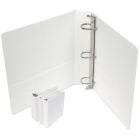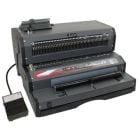Creating a Family Tree Book
A family tree book is a great gift for current and future generations. Here are a few things to consider as you get started.
Getting Your Material Together:
If you intend to do a complete family tree, you have a lot of options. Just do an internet search for 'genealogy' and start to work from there. You can probably find reviews on all the different services that you discover on your search. There are some that will allow for free trial periods, so you might want to give them a try to see what you can come up with and how this type of research in suits you in general.
You can, of course, simply do a family tree project, or you can expand into more of a family history book if you are so inclined. One idea might be to divide your book into sections and chapters for certain branches of the tree. You can then gather stories, photographs, anecdotes and any other historical information you are able to compile for each chapter.
If there are older members of your family still remaining, you could (and should) conduct interviews with them. While some may want to do this via email or snail mail with a series of written questions and answers, the most effective and productive way to conduct these interviews is in person, recorded, and prepared with questions and photographs to get the memories flowing. You can also use these visits to find copies of family records such as birth, death, and marriage certificates, excerpts from diaries and journals, and other items that will help to flesh out the stories of your family.
A word about photographs: yes, you should include them, and make them as interesting as possible. You will need the cooperation of as many family members as are willing, and perhaps to be persistent in getting their help with your project. You will also want to find a high-quality photo scanner if you don't already have one.
Organizing Your Book:
There are a number of ways to go about this. As suggested above, you could divide the book into chapters according to the greater branches of your family tree, or you can organize it chronologically or by geographical location. Choose the one that suits your purposes the best, then decide if you will be including sections for small pieces of text, and if so, begin to write and compile them.
When it comes to writing, there should be nothing to fear. If you simply do not have the writing gene, see if you can get a member of your family who does to contribute. Another option would be to simply transcribe and edit some of the quotes you get during your interviews. This is more what is called the "oral history" style, and it can be very compelling.
Binding and Printing:
If you are making one copy, and this is the only project like this that you ever plan on doing, you can simply send your files to an online service. However, if you like doing things yourself, saving a few bucks, and you think you might like to do more projects like this in the future, you should consider purchasing your own thermal (hardcover) binding machine. You can find them from less than $100 new, and they are incredibly simple to use.









